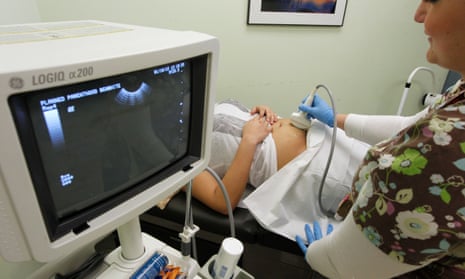Between 100,000 and 240,000 women in Texas aged 18 to 49 have tried to induce an abortion at home, according to a new study released on Tuesday.
In the first study of its kind, the Texas Policy Evaluation Project (TxPEP), run by the University of Texas, attempted to show the prevalence of self-induced abortions in the state. The findings were released in the wake of legislators’ attempts to limit women’s access to abortions. Last week the supreme court agreed to hear a challenge to one of Texas’s most stringent abortion laws, known as HB2, which has led to the closure of more than half the state’s clinics.
Presented alongside the TxPEP data were interviews with 18 women who had tried to end their pregnancies at home – with varying degrees of success and differing medical consequences – in the past five years. The women were interviewed between October 2014 and October 2015.
A 24-year-old from the lower Rio Grande valley used the abortion medication misoprostol to try to end her pregnancy.
“It was the worst cramping I’ve ever had and probably one of the worst pains I’ve gone through,” she wrote. “And there was also the fact that I’m doing it at home, we’re not – though we have all of the information as to how much bleeding is too much bleeding, you know, or that, there’s always that slight uncertainty of, like, I don’t really know what I’m doing.”
A 20-year-old Houston woman wrote about taking black cohosh, vitamin C and “a special root pill” to try to end her pregnancy.
“And after a while taking all the pills was very nauseating and I didn’t want to do it any more,” she wrote. “So, it was just a lot to take in and I wasn’t taking it well, but I kept doing it anyway.”
She, like the other five women who tried taking herbs or vitamins, had to obtain a surgical abortion when it became clear that these methods were not working.
To determine the prevalence of self-induced abortions in Texas, investigators surveyed women and asked them whether they had ever tried to end a pregnancy outside a clinical setting, or if their best friend had. The best-friend measure was included because women tend to under-report abortions in studies.
In April 2013, 41 licensed abortion providers were open in Texas; today only 18 remain open. HB2 went into effect in November 2013.
The law requires abortion providers to have admitting privileges with a nearby hospital. Many Texas hospitals have refused to extend such privileges, leading to the closure of more than half of Texas’s clinics.
Another provision, that abortion providers must meet the licensing standards of an outpatient surgery center, has been blocked by federal court. If it were enacted, only nine clinics across the state would comply with the standards – which are expensive to meet, but not medically necessary.
The measure is being challenged in the supreme court case Whole Woman’s Health v Cole.
Amy Hagstrom Miller, president and CEO of Whole Woman’s Health, said it was “tremendously disrespectful” for Texas women to not have equal access to safe abortions.
“Abortion is legal in this country,” Hagstrom Miller said. “And so every woman deserves to have access to whatever method for terminating her pregnancy safely she might choose in her local community.”
Additional reporting by Molly Redden in New York
